Taxi fares are said to be expensive. Is that true? What is the rate of taxi fares in Japan? And how to call for a taxi? In this article, we have compiled all you need to know about taxi fares in Japan, including surcharges and discounts. We also cover taxi-related Japanese terms, how to call a taxi in Japan, and proper taxi etiquette to uphold.
Table of Content
- How to Call Taxi in Japan
- Understanding Japan’s Taxi Fares
- Manners and Precautions when Using Japanese Taxis
- To Close
How to Call Taxi in Japan

Let’s start with how to call for a taxi in Japan before jumping into taxi fares. There are many ways to call for a taxi in Japan, you can make a phone call, use a taxi app service, or just hail down a cab at the roadside. For tourists visiting Japan, making a phone call may be too high a hurdle not to mention it may incur roaming costs, or if you are simply worried about communicating well in Japanese, in which case the best way is to use a taxi app.
Using a taxi app that supports your mother language, you can easily set the pick-up and destination point. Communication with the taxi driver is also minimal, and by paying through the app with a registered credit card, you don’t need to go through the hassle of payment. If you are carrying luggage or are travelling in a large group, you can also select a suitable sized car.
Related Taxi Terms >> Call Taxi (迎車 geisha), Radio Dispatch Taxi (無線配車 musen haisha)
「迎車 geisha」is a “call taxi (コールタクシー)”, a type of ride-hailing service where you call for a taxi to be sent to you right away. It is also called「今すぐ呼ぶ ima sugu yobu」meaning “call now”. It is distinguished from reservation (予約 yoyaku) taxis which are booked for a specific time. Depending on the region and method of calling the taxi, a surcharge for “call taxi (迎車)” and “reservation (予約)” may be imposed or exempted.
「無線配車 musen haisha」is easy to understand one you know that「無線 musen」means “wireless/radio communication” in English. After contacting the taxi company and requesting a taxi, the taxi company will contact by radio the nearest available taxi to your location and dispatch it to you.
Call A Local Taxi Company
You can call a taxi company directly. Simply look up the number by searching for [the area’s name] (eg. Fukuoka 福岡) + taxi company (タクシー会社)]. Then, dial the number. Some companies accept calls in English (eg. NIHON KOTSU in Tokyo).
Brief Stop >> What is “hire (ハイヤー)”?
Incidentally, there are also “car hire” services in Japan, where you can reserve a car to take you to your destination on a fully reserved basis by contacting the service provider. In the case of “urban hires”, licensed operators can only provide their service in specific areas and can generally only be booked for a minimum of 2 hours.
Using a Japan Taxi App
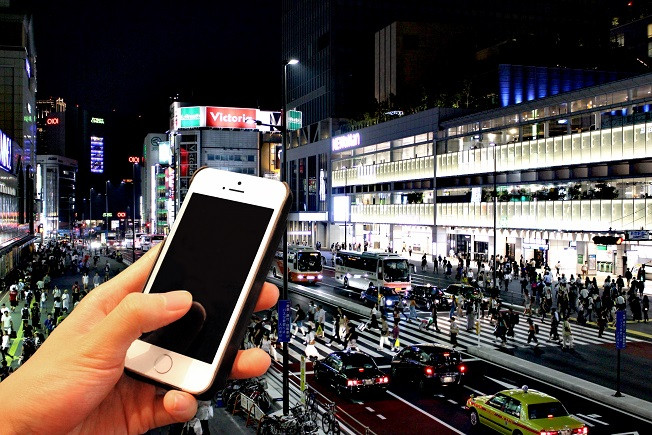
If you have Wi-Fi access, you can make use of a Japan taxi app. Availability in your region varies from app to app so it is recommended to check and download the app in advance. For apps that allow online payment, payment is completed automatically when you reach your destination and get off which is convenient. Here are some Japan taxi apps with a relatively wide area of usage:
- Go : Miyagi, Ibaraki, Gunma, Saitama, Chiba, Tokyo, Kanagawa, Toyama, Ishikawa, Gifu, Aichi, Kinki, Saga, Kyoto, Osaka, Hyogo, Nara, Hiroshima, Fukuoka
- Uber Taxi : Aomori, Awaji Island, Fukuoka, Fukuyama, Hiroshima, Koriyama, Kochi, Kyotango, Kyoto, Nagoya, Nakatonbetsu, Osaka, Sendai, Tokyo, Yokohama
- DiDi : Hokkaido, Miyagi, Tokyo, Saitama, Chiba, Kanagawa, Shizuoka, Osaka, Hyogo, Kyoto, Fukuoka, Nagasaki, Okinawa
(※ Usage area may have expanded.)
About getting internet access when visiting Japan, read <Japan SIM Card and Pocket Wi-Fi Rentals for Travel>
Hailing a Passing Taxi (Understanding the Taxi Signs)
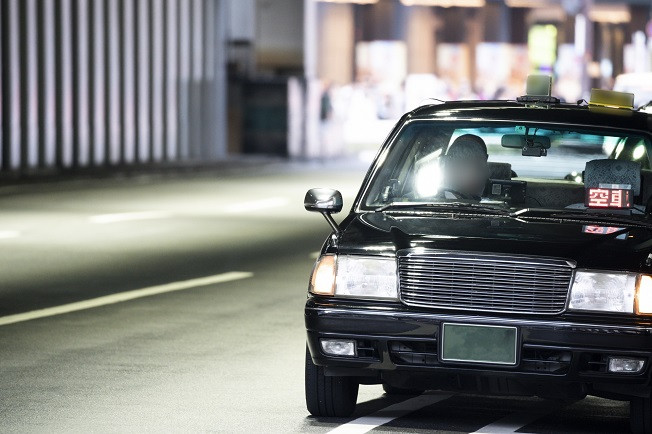
Oh yes! Finally, a taxi is approaching. However, what do the displayed Kanji characters mean? Oh, the taxi didn’t stop for me even though my hand was raised… Is it off-duty?
Here we introduce the different Kanji characters that taxis will display, it is convenient to know and will surely help you whenever you need to hail a cab.
Taxis Open for Business
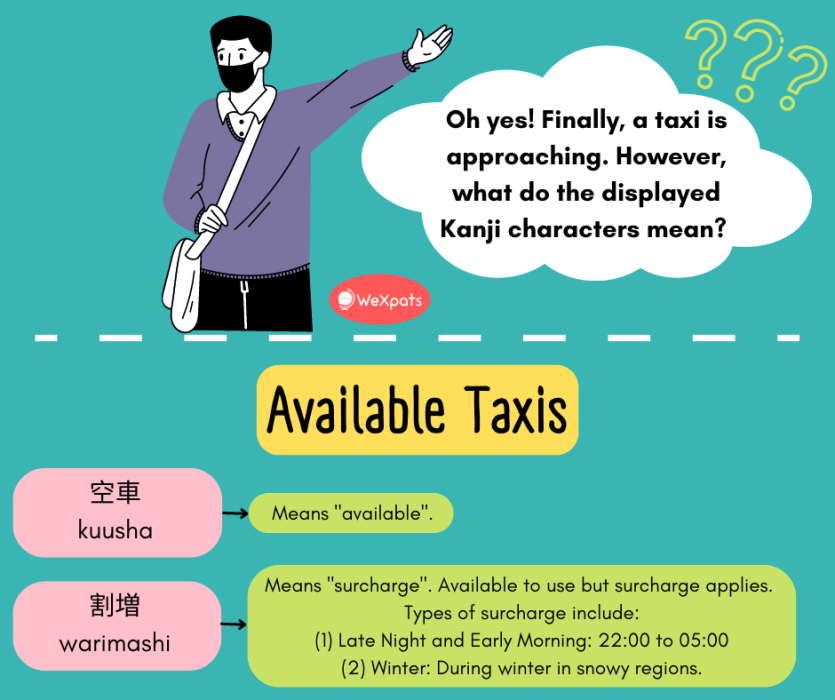
- 空車 / 空車 VACANT - Read “kuusha” means available to use. Usually displayed in red.
- 割増 - Read “warimashi” means surcharge. Available to use but surcharge applies, usually for late night and early morning taxi usage.
Unavailable Taxis
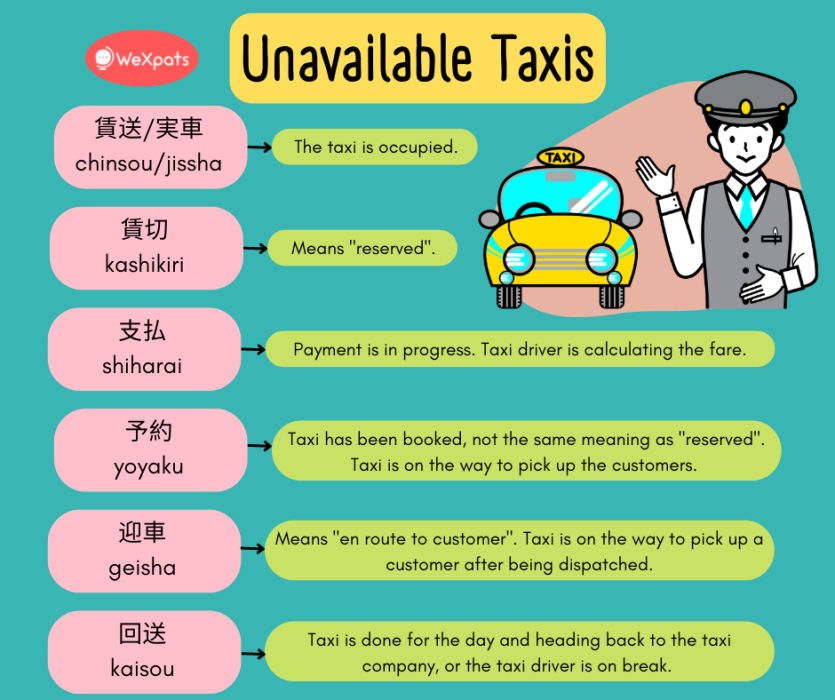
- 賃送 (chinsou) / 実車 (jissha) - Means the taxi is occupied.
- 支払 - Read “shiharai” means that payment is in progress as the taxi driver is calculating the fare upon arriving at the customer’s destination.
- 賃切 - Read “kashikiri”, the taxi has been reserved.
- 予約 - Read “yoyaku” means booked. The taxi is on the way to pick up the customer.
- 迎車 - Read “geisha” means en route to a customer. The taxi is on the way to pick up the customer after being dispatched.
- 回送 - Read “kaisou” means “returning to station” when it comes to trains. In the case of taxis, it means the taxi is done for the day and heading back to the office or the taxi driver is on break.
Writer's Pick
Taxi Fare in Japan

The taxi fare in Japan differs from region to region, and city to city. There is also a lot to know about the fare system, such as the base fare charge, surcharge, and available discounts.
Are taxis expensive in Japan? Comparing Japan Taxi Fare with London and New York
In March 2015, the Ministry of Land, Infrastructure, Transport and Tourism (MLIT) published the results of comparison between Japan’s taxi fares with London and New York, which are famous for having expensive taxi fares. The comparison was based on the average ride distance of approx. 4.0 km in Tokyo.
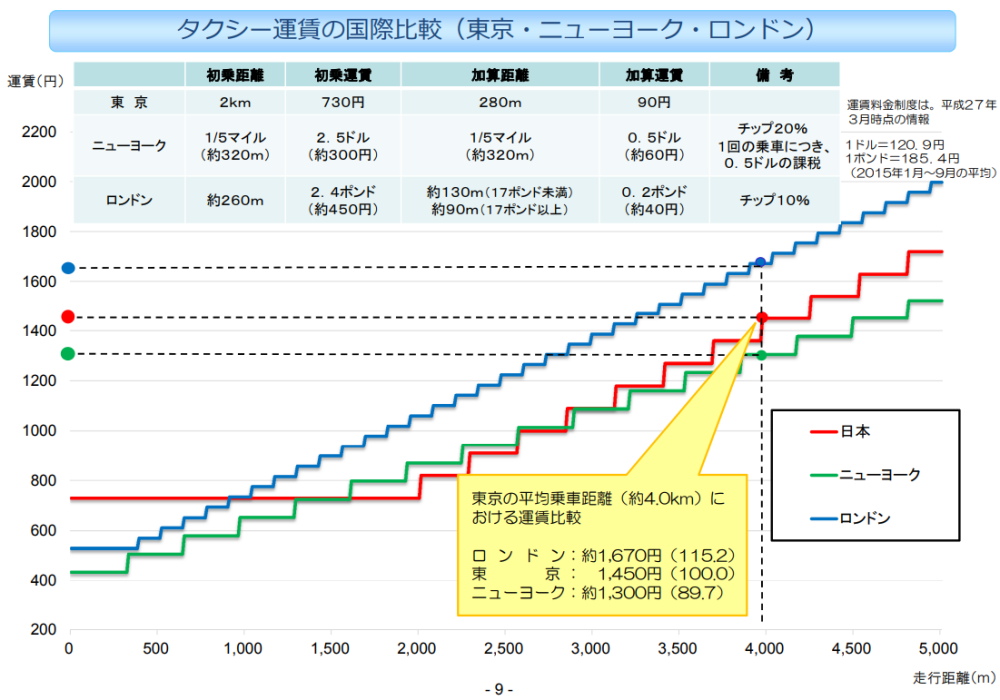
Image Credit: ©MLIT Japan
- London : approx. 1,670 yen
- Tokyo : approx. 1,450 yen (*As of November 2022, the Tokyo base rate is increased from 420→500 yen, making it more expensive.)
- New York : approx. 1,300 yen
It is quite intimidating to know that taxi fares in Tokyo are more expensive than New York. However, people usually only use taxis on rare occasions, like emergencies or when trains are no longer running, so it is good to at least have some background knowledge of the fare system just in case.
※ MLIT, ”タクシーの運賃制度について” Pg. 9 [PDF]
Japan Taxi Fares and Fare System (Tokyo 23 Wards)
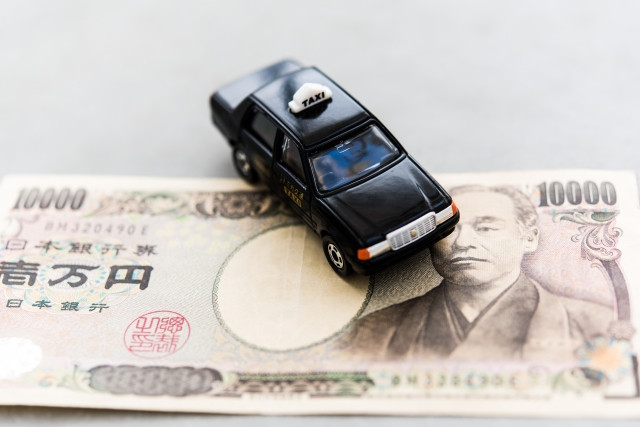
Taxi fares in Japan can be separated into the following categories:
- Basic Fares (distance-based / time-based / fixed fare)
- Extra Charge / Surcharge (late night early morning / winter)
- Discounted Fares (public service / long distance / commercial)
- Others
1-1 Basic Fares - Distance-based
Fare is calculated based on actual distance travelled from boarding point to arrival point.
By default, the fare is calculated by [base fare + additional distance fare], but if driving below a certain speed (not exceeding 10 km/h), then a “time-distance combined fare” may be applied. This is applied in cases like traffic jams, waiting at a traffic light, or on-standby upon request by passenger. In such a situation, the boarding time is converted to additional distance.
The distance-based fare in Tokyo 23 Wards is 500 yen for the base fare up to 1.052 km travelled, an additional distance is calculated at 80 yen per 233 m. As for the time-distance combined fare, it is 80 yen for every 1 minute and 25 seconds.
[Note] As of November 14, 2022, the base fare was increased from 420 yen to 500 yen in Tokyo 23 Wards, Musashino-shi and Mitaka-shi. This is the first time in 15 years, reflecting a rise in drivers’ wages and a sharp rise in fuel costs.
※ MLIT, Press Release, “令和4年11月14日より東京特別区・武三地区のタクシー運賃が変わります。” [2022.11.10] [PDF]
1-2 Basic Fares - Time-based
Time-based fares are applied when it is difficult to apply the distance-based fare system. It is usually used on special contract services agreed upon with the taxi service company for special events, such as sightseeing tours and ceremonial occasions (weddings, funerals, etc.).
The time-based taxi fare in Tokyo’s 23 Wards is calculated at 4,700 yen for the first hour, and 2,150 yen for every subsequent 30 minutes.
1-3 Basic Fares - Fixed Fare
Fixed fare is for cases when the fare is determined in advance because of a fixed destination. It is used for taxi operations between certain areas, such as to and from trains stations and airports. In some cases, it also applies to events, taxi tours between major tourist attractions, etc.
2-1 Surcharge - Late Night and Early Morning
Generally there will be a surcharge of 20% when boarding taxis between 22:00 to 05:00.
2-1 Surcharge - Winter
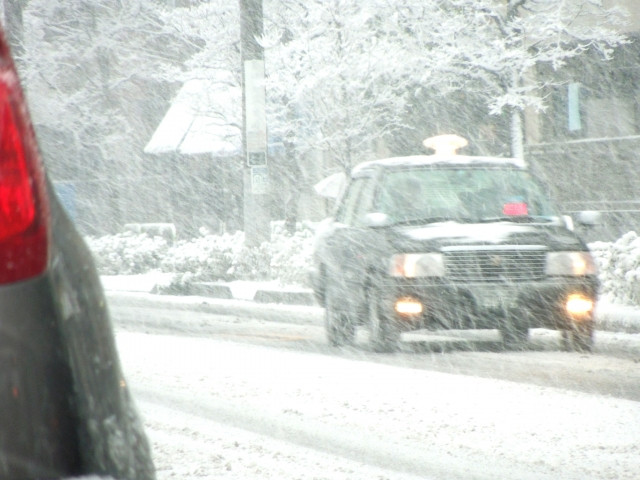
In the Hokkaido and Tohoku regions, where there is a lot of snow, a winter surcharge of 20% applies in the winter season from end of December to end of February.
However, this surcharge does not apply in the case of taxi tours, time-based faces, etc. circumstances. If you are planning to use a taxi at these times, it is best to check with each local taxi company for more information.
3-1 Discounted Fares - Public Service
Taxi discount? It may sound unusual, but you’ll understand once you read the explanations.
Public service discounts are provided by the law to special needs persons, such as those with physical disabilities, intellectual disabilities, etc. as part of Japan’s social welfare. The purpose behind the discount is to support disabled / special needs people who may face difficulty carrying about their everyday lives. To make use of this discount, proof in the form of “Certificate of Disability (障害者手帳 shougaisha tecchou)” needs to be provided.
3-2 Discounted Fares - Long Distance Travel
A special discount fare for long distance travellers that exceed a certain amount. In Tokyo 23 Wards, a 10% discount is given for travellers spending over 9,000 yen.
3-3 Discounted Fares - Sales
There are other discounts offered by the taxi service company to stimulate the market.
4 Other Applicable Fees
Aside from paying the standard fare for using the taxi, other circumstantial fees may also apply. For example, a “standby fee” in situations where the passenger asks the taxi to wait whilst he/she runs an errand; or a “returning call taxi fee (迎車回送料金)” which is standard for call taxis. The fee amount depends on the taxi company and the region, there may be cases where no fee will be charged.
Other fees that may apply include car selection fee, reservation fee, and time specification fees. Moreover, if your route requires (or you request) use of expressways or similar, you will have to pay a separate toll charge. Something to keep in mind!
※ Tokyo Kojin Taxi Association, “運賃の仕組み”
※ MLIT, ”タクシーの運賃制度について” Pg. 10 [PDF]
Is it actually cheaper to use a taxi?
What do you mean it’s cheaper? Aren’t taxis expensive in Japan?
In some cases, using a taxi may actually be cheaper. Transfer charges when using subways, trains, and buses don’t apply to taxis, so when considering the number of passengers, number of transfers, and distance, there are quite a few occasions when taking a taxi is more economical. Rather than dismissing taxis as a transport option for being expensive, why not try looking into it whilst preparing your travel route?
Manners and Precautions when Using Japanese Taxis
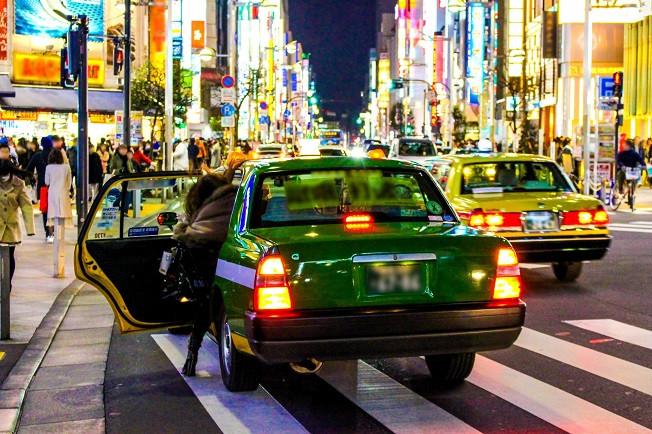
Riding a Taxi in Japan
Oh! Here comes an available taxi! How exciting, my first taxi ride in Japan. Wow! Automatic doors!
That’s right, in Japan, the taxi doors are controlled by the driver with a lever, so you should not touch the doors. As the taxi approaches you, wait for the door to open before getting it. If you try to open it yourself whilst the driver works the lever, it may end up breaking the door or cause an accidental injury, so just be patient and wait. This is due to the awareness by the driver that they are in charge of everything from the passengers boarding to disembarking.
For this reason, if you have luggage that needs to go into the trunk, it is common for the driver to get out and load your luggage for you. And when you arrive at your destination, the driver will also do the unloading. So just trust them to do this as part of the service, why don’t you? If it rains, the driver may also guide you to the taxi with an umbrella.
Speaking of which, the door for the front passenger seat is not controlled by the driver. Unless there are 4~5 passengers boarding, the back seat is generally used.
From 2011 onwards, a smoking ban was declared by taxi associations registered with local governments in the 47 prefectures across Japan. However, since the associations do not have authority to enforce the ban, as of 2013, there are only around 10% of non-smoking taxis in Japan. Even so, let’s practise consideration for the driver and other passengers' health and stop smoking in taxis.
※ The House of Representatives Japan, “禁煙タクシーとハイヤーに関する質問主意書” [2013.04.05]
Payment of Taxi Fare
Tipping is not part of Japanese culture, likewise when it comes to taxi services, so no need to include tips when paying the fare.
Taxis that accept credit card payments are on the rise. Do note that not all credit card types may be accepted. Check the acceptable payment methods displayed on the taxi window to see what is available.
In some cases, public transportation IC cards like Suica, or QR code payments such as electronic money, LINE PAY, PayPay, etc. may be used.
But wait! A credit card logo is displayed on the window but cards are not acceptable?!
There are cases like this so please be careful. This is not a scam, what the logo seal indicates is that a taxi ticket (タクシーチケット) issued by a Japanese credit card company to corporate clients can be used. If you are not sure, the best way is to confirm with the driver in simple Japanese:
「クレジットカードは大丈夫ですか?」
Kureditto kaado wa daijobu desuka?
- Do you accept credit cards?
To Close
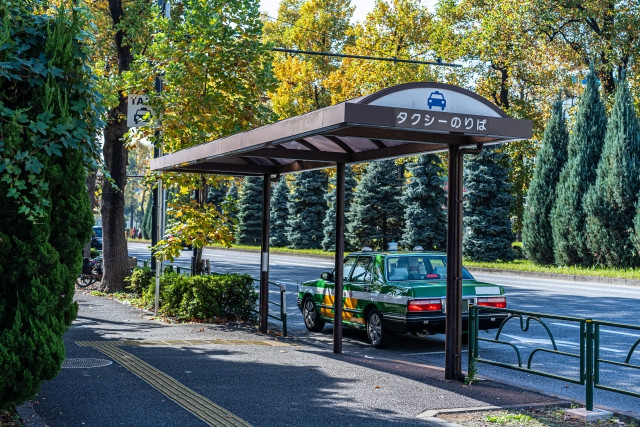
Japanese taxis are expensive but can be incredibly convenient. There are also occasions when using them is cheaper, like say splitting the cost with a group when travelling a short distance. Learning how to call taxi in Japan, the appropriate taxi mannerisms, and the fare system is useful information, you never know when you require the services of a taxi in Japan.



































